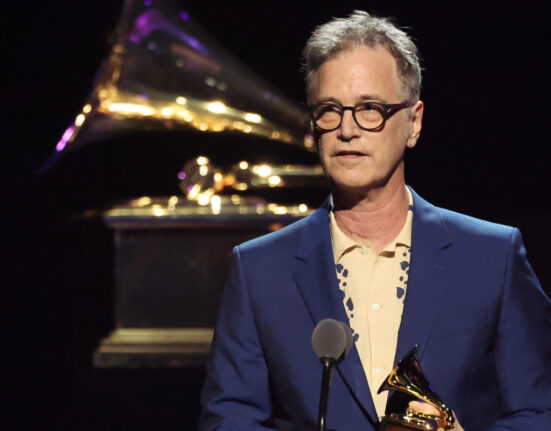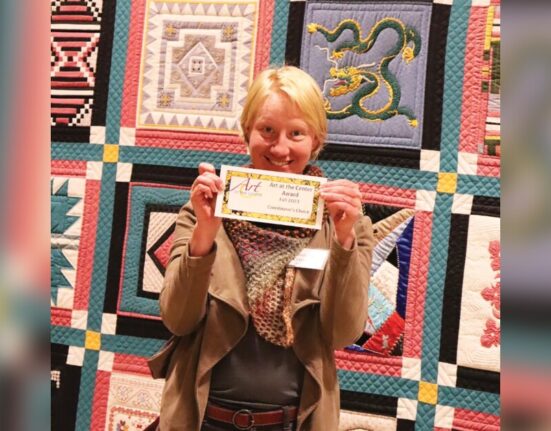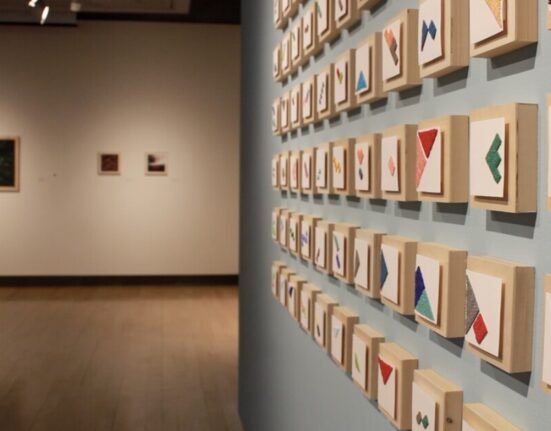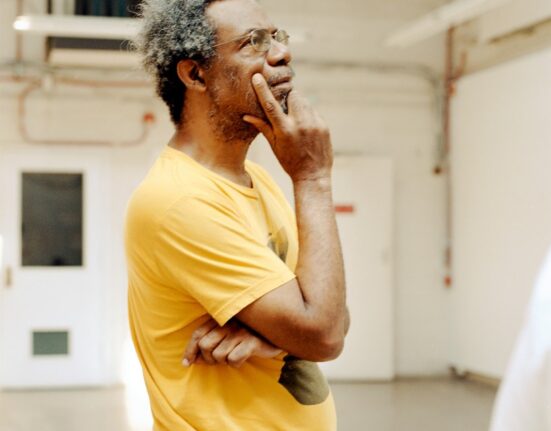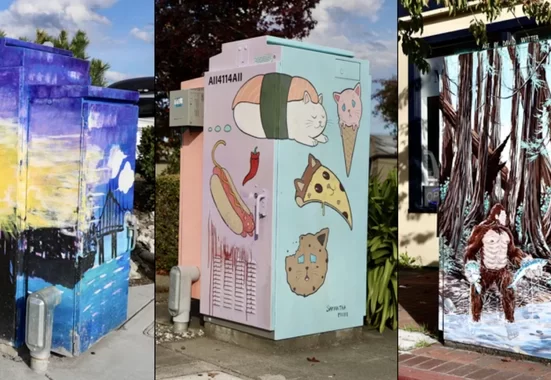It’s not hyperbole to say that DOOM and Madlib altered perceptions when they released their collaborative record ‘Madvillainy’ twenty years ago. Rather than making music to fit expectations, they bent the rap album format into a shape that fit them; two oddball creators working in and around a space that couldn’t quite contain their creative energy.
The record continues to find its way to new audiences; it’s passed on by friends and siblings, as a rite of passage, a peek behind the curtain, and often leads to a transformative experience, tearing away imagined boundaries and exposing the freedom inherent in creative practice.
To celebrate 20 years of this near-mythical work, we invited 12 artists from a range of backgrounds and practices to reflect on their experiences with ‘Madvillainy’. Their responses reveal its impact as a grail working its way through time and space, leaving those who it lands with profoundly changed. It’s described as a bible, a spiritual experience, a friend, a sacred talisman, a place of refuge; and it has imbued our guests with courage, safety, escape, humour, encouraging them to remain adventuring and exploring.
Comfortably amongst the best expressions of creativity across the past two decades, ‘Madvilliany’ is a timeless piece of art that will undoubtedly continue connecting with and inspiring generations to come.
Mavi (Rapper, Charlotte)

What are your memories of first hearing ‘Madvillainy’?
My first time hearing ‘Madvillainy’ was with my best friend Mekhi. We both were huge fans of ‘Operation: Doomsday’ and one day in the ninth grade he was like, “You haven’t heard this?” I haven’t been the same ever since.
What does it mean to you personally?
It means an unimaginable marriage of cutting edge production and inventive raps. It is lightning in a bottle logistically, aesthetically, symbolically, and in the sense of holding substance and humor in one hand.
How has it influenced you creatively?
It has influenced my cadence, schemes, what I’m impressed by in a verse, beat selection, use of audio vignettes as a storytelling device, and my approach to “cool”.
Why do you think it has endured the test of time?
It is as timeless as ‘Illmatic’, and as timely as ‘What’s Going On?’ It’s groovy, hilarious, quick, irreverent, and beautiful.
Photo by: Inès Tendresse
—
Al Sow (BADBADNOTGOOD / Group Climate) / (Drummer and Producer, Toronto)

What are your memories of first hearing ‘Madvillainy’?
The first time I heard Madvillainy was from my high school bandmate Liam. We had just finished a rehearsal and we were hanging out smoking weed and he put the album on. I can visually remember the setting because of how it made me feel. It immediately caught my attention and I had so many questions. I had never heard anyone rap in such a unique, fun and powerful way. Paired that with Madlib’s incredible beats, sampling and skits it made me feel so proud to be a jazz nerd that loves rap and instrumental music.
What does it mean to you personally?
This album means the world to me. It gives me so much joy listening to it from to back and rediscovering a sample I wasn’t hip to or forgot about. It always reminds me to never stop exploring. I have had the immense privilege of playing shows and meeting both DOOM and Madlib on separate occasions. They were both so kind to me and the BADBAD fellas. Meeting my rap and beat making heroes is something I’ll never take for granted.
How has it influenced you creatively?
I listen to this album a few times a year and go back to DOOM and Madlibs many projects for fun and inspiration. ‘Madvillainy’ has given me as a drummer so much influence on patterns, chords, melodies and some of the best sampling I’ve ever heard. When BADBADNOTGOOD started to write and create original music, it was this album that showed us how important it is that bands and artists create original music. Without the goal of money or fame just pure passion and exploration. If you get sampled for something that’s not intentionally made for that reason, I find it makes the best beats.
Why do you think it has endured the test of time?
This album was made without the pursuit of trends or gimmicks. You can tell that both artists meet in the middle of pushing themselves to find new sounds and ways to share stories. Everything I’ve learned about how it was made at the Bombshelter and what took place during its creation doesn’t read as forced work. I think they highly respected one another and held no reservations on making music and weirder art. When you can go back to an album and constantly find inspiration and new experiences, that to me is art for the ages.
Photo by: Jacob Consenstein
—
AJ Suede // (Rapper & Producer, Seattle)
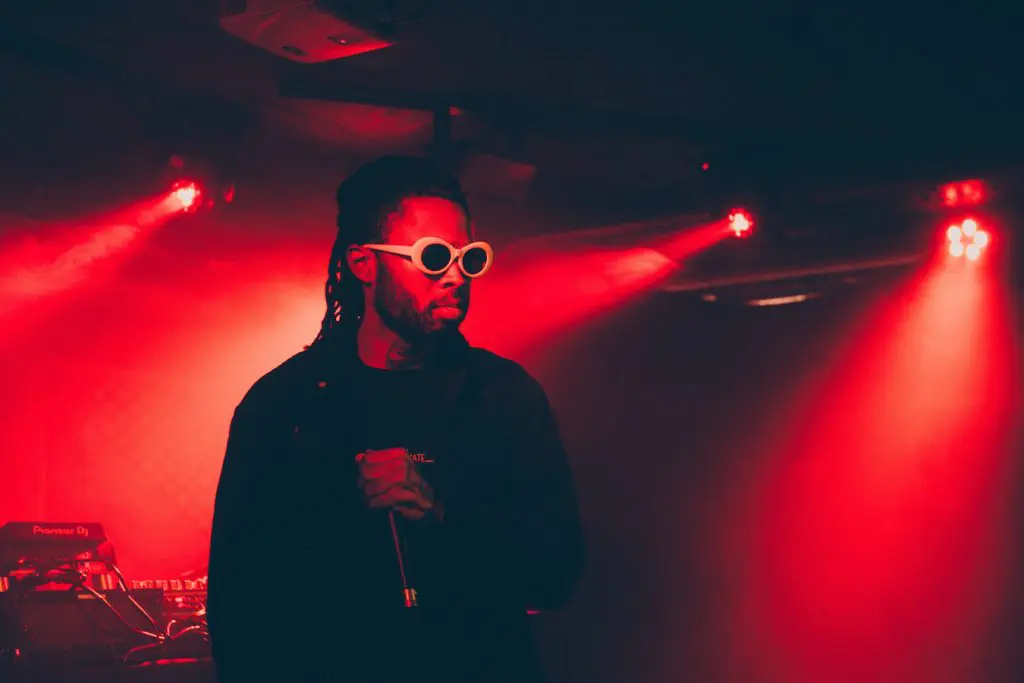
What are your memories of first hearing ‘Madvillainy’?
My introduction to ‘Madvillainy’ was the video for ‘All Caps’. I saw it in the summer of 2010 and it led me down the DOOM and Stones Throw rabbit hole. A very specific memory I have with the album is from when me and my friends would jack beats and freestyle over them in high school. I played the ‘Operation Lifesaver a.K.A. Mint Test’ beat and one of my friends told me “the beat never drops”. Which is interesting considering the landscape of underground rap at the moment.
What does it mean to you personally?
It was an album that showed me you can really do whatever you want with rap, and rap about anything you want. At the time I was listening to mostly materialistic rap so it was cool to see somebody rapping about comics and making pop culture references.
How has it influenced you creatively?
Overall I learned that there aren’t really any rules. Songs and beats don’t have to follow traditional song structures and songs can be shorter than two minutes without hooks and bridges. It seems to me that both artists made the music they wanted to hear, and that resonates with the audience. The instrumental interludes and skits are also a lot less conventional than what you would hear on other rap albums. ‘Madvillainy’ is like a collage of sounds and thoughts.
Why do you think it has endured the test of time?
The influence is everywhere; it’s undeniable. The album continues to find newer and younger audiences by the day.
@ajsuede
—
Cadence Weapon // (Rapper, Producer and Author, Hamilton, Canada)
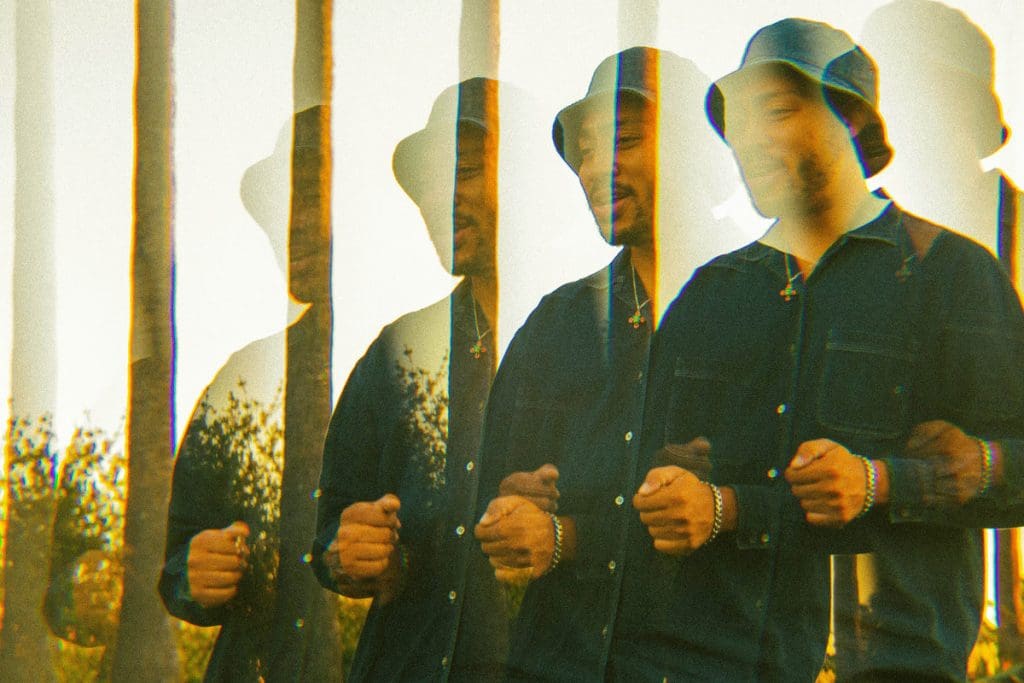
What are your memories of first hearing ‘Madvillainy’?
I remember first hearing the leaked version in 2003 and thinking that we were about to hear something that was going to shift the culture if it ever came out. When I listened to the finished version to review it on Pitchfork with Nick Sylvester, I was amazed by how much further they polished the sound and how DOOM’s verses were somehow even tighter than before.
What does it mean to you personally?
It’s probably the best underground rap album ever. It’s the album where DOOM really became a legend. He was a cult figure before but this solidified his legacy as “the best MC with no chain ya ever heard.” Honestly, basically every rap album that has come out ever since still pales in comparison. I’ll always remember where I was when this album came out. It just felt like this landmark release that was the logical inflection point for the underground rap scene. It raised the standard to a level that their peers never reached.
How has it influenced you creatively?
It’s an album that I always go back to when I’m working on a new record. It’s the perfect palette cleanser that reminds you of the creativity and artistry that you need to have if you want to make something really special. When it first dropped, ‘Madvillany’ inspired me to take my own music more seriously. I put out my first mixtape a year later, including a track where I rapped over ‘Supervillain Theme’. DOOM reached another level technically on this record, he took the multisyllabic rhyme schemes beyond anything that had been heard before. But he was also surprisingly loose and jazzy, leaving out words and letting the listener fill in the blanks or throwing a curve ball by subverting your expectations with an unexpected word to end a line. His mastery over rhyming was never more apparent.
Why do you think it has endured the test of time?
We don’t really get complete albums like this anymore with one rapper and one producer in perfect harmony at the height of their powers. ‘Madvillainy’ has a lived-in, timeless quality to it, it feels like a sacred talisman that always existed. It goes beyond rap into this singular cosmic prog jazz direction that makes it stand alone in hip-hop. You can hear the excitement of discovery all over it. I’m still hearing new things every time I listen.
—
Dad Bod Rap Pod // (Podcast, San Jose)
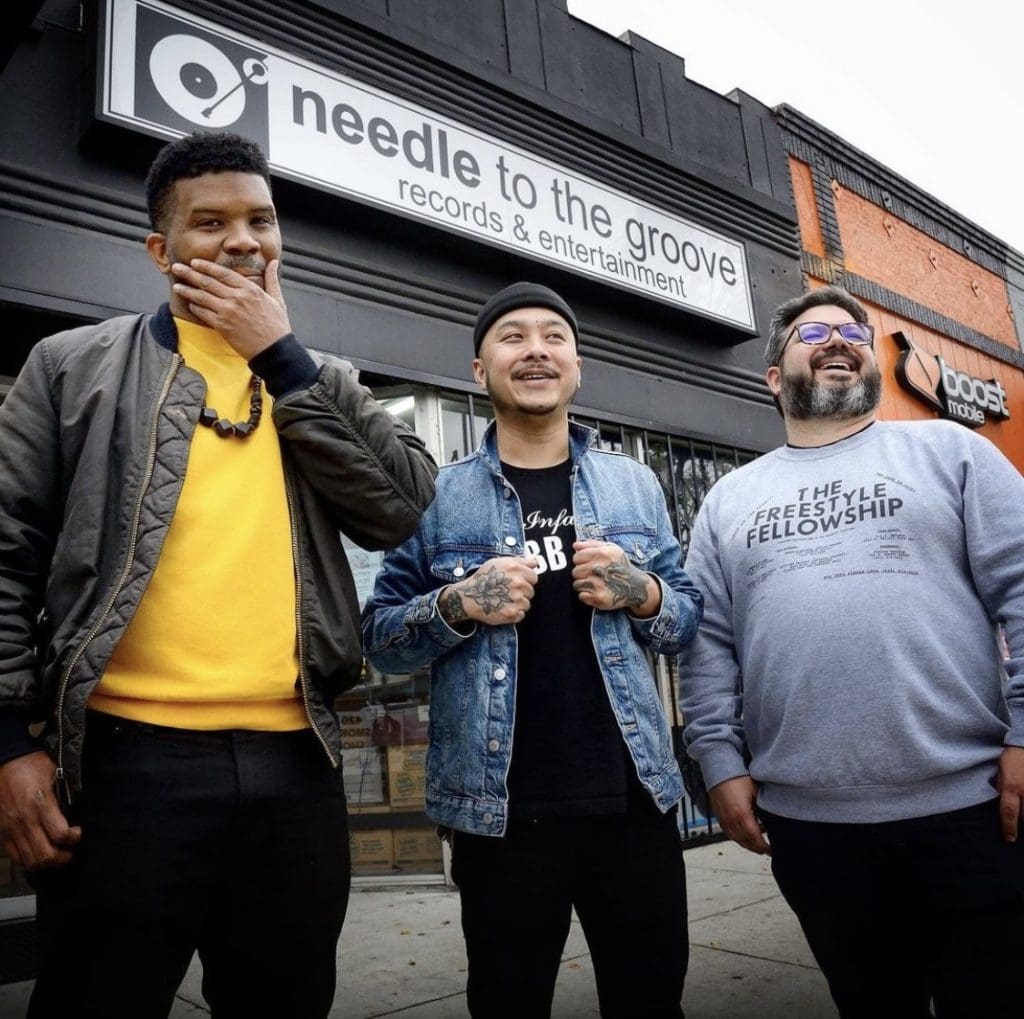
What are your memories of first hearing ‘Madvillainy’?
When ‘Madvillainy’ dropped I was working as a hip-hop buyer at an independent record store, so I’m pretty sure I heard it a little bit before the official street date as a promo. I was aware of the controversies and leaks surrounding the project because I used to spend a lot of time on record collecting message boards, but I had not actually heard the leaked version, so it was new to me. I was a huge fan of both DOOM and Madlib at the time, so expectations were high. And honestly, on my initial listen, I thought it sounded sloppy and unfinished. I liked it, but I didn’t get yet that the rough edges not being sanded down was part of the project’s charm, so I was a little underwhelmed. However, after talking about it with my friends and customers, seeing it fly off the shelves, I came to appreciate the album as more than the sum of its parts and to decode some of DOOM’s epic one-liners (“borderline schizo / sorta fine tits though” still hits to this day) as well as Madlib’s revolutionary use of the SP-303 on a major release.
What does it mean to you personally?
‘Madvillainy’ is one of the great collaborative albums in rap, one of the rare underground albums that has achieved cult status among a larger audience, and a testament to the power of mystique as a marketing tool. DOOM and Madlib may have been from opposite coasts, but they both built up an earned mythology about themselves by using aliases, staying away from cameras for the most part, and incorporating a lot of references and humor into their music. It made sense that they would admire each other, but it was a bit of a surprise that their collaboration, a gold standard for 1 MC-1 producer projects, came together so seamlessly. It’s a great work of art, and a great starting point for people who are curious about left-of-center hip-hop to see what’s happening beneath the surface level of the genre.
How has it influenced you creatively?
We have applied a similar anything-goes sonic quality to recording our podcast. We also smoke a lot of weed, though probably not nearly as much as Madlib and DOOM did on a normal day in the early 2000s.
Why do you think it has endured the test of time?
It’s just a great record. DOOM had one of the greatest years of any music act in history in 2004, and ‘Madvaillainy’ is the pinnacle of a mountain range of great records. The songs are short and to the point, the videos, especially for ‘All Caps’, are great, the remix albums from Madlib himself Four Tet and Koushik brought the project to different audiences. Both artists remain extremely influential even though DOOM has since passed away tragically early. Stones Throw has kept the record in print, and the photography is phenomenal, so it is eye-catching on a record store rack.
RIP DOOM. Madlib if you’re reading this, please consider being interviewed on Dad Bod Rap Pod someday, we can talk about old records and Melvin Van Peebles movies and anything else you’re into.
—
Lapgan // (Beatmaker, Chicago)
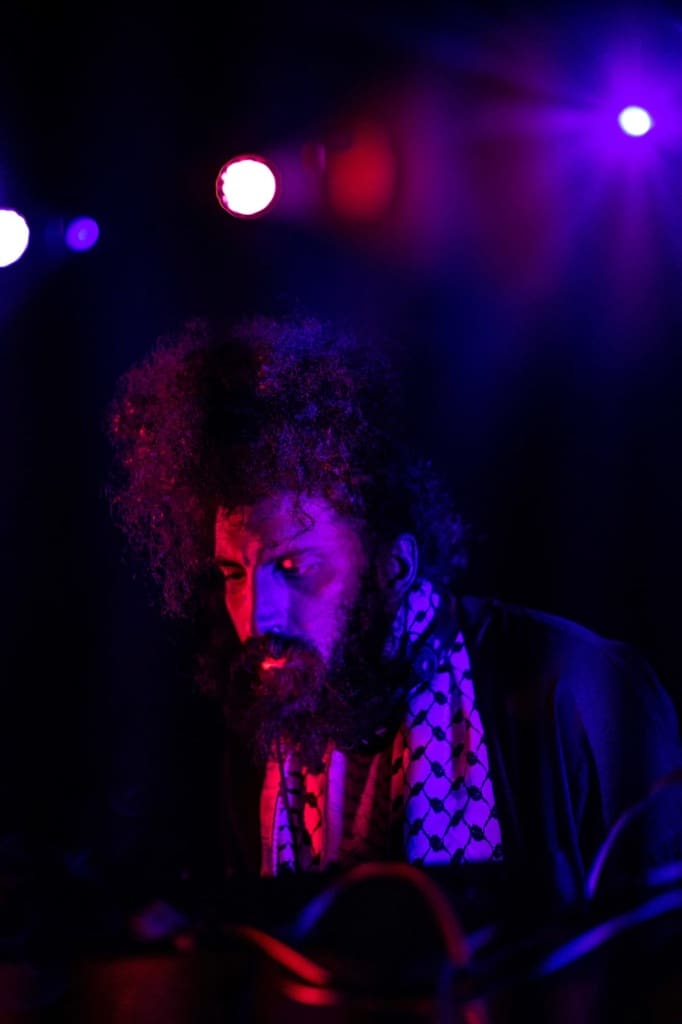
What are your memories of first hearing Madvillainy?
I had a phase in high school where I pretty much exclusively listened to DOOM. I had three CDs in the car – ‘Madvillainy’, King Geedorah’s ‘Take Me To Your Leader’, and DANGERDOOM’s ‘The Mouse and the Mask’. I remember how I’d never heard anything like ‘America’s Most Blunted’, it never got old
What does it mean to you personally?
That album is one of my best friends – even if you don’t talk for months or years, you go back and pick right up where you left off. They’ve changed, and you’ve changed, but that bond is as tight as ever. Every time I listen, no matter what’s going on in my life, there’s a comfort in its excellence and how honest it is. I hear something new every time.
How has it influenced you creatively?
I mean Madlib really is the goat, and his chemistry with DOOM is unmatched. The kick and clap on ‘Figaro’ ooof. Whenever I work with another artist, I have what they did together in the back of my mind.
Why do you think it has endured the test of time?
Originality and purity. It’s DOOM and Madlib at their best. Two of the greatest to ever do it. I don’t think anyone could make an album that sounds like it – the pinnacle of two radically brave artists willing to share their spirits with the world. The lore behind it too. It feels like pure, joyous creative energy. An all-time favorite forever.
Photo by: Manal Jakhar
—
Lord Apex // (Rapper, London)

What are your memories of first hearing ‘Madvillainy’?
Bear in mind, this is a 14-year-old me. I stumbled upon the underground holy trinity (Madlib, DOOM & Dilla). Finding ‘Madvillainy’ was such a different experience. Before listening to this album I assumed there were so many rules for what an actual song could be. I turn on this album and right away hearing ‘Accordion’, DOOM bars off for over a minute straight to the coldest beat ever – then, song done! Young me was so narrow-minded I didn’t think you could break the rules. I was so used to hearing the basic commercial song formulas up until that point. I didn’t know you could just put a beat on a rap album with no words on it.
What does it mean to you personally?
Personally this album means the most to me: it’s a hip hop bible. It reminds me there’s no rules to any of this music stuff; whether it be the comedy skit sound bytes to making jokes in super serious songs, or even just not taking yourself too serious in general and keeping the music fun.
You can really make one of the most acclaimed hip-hop albums ever with the bare minimum. It’s all down to how much work and love you put into what you’re doing. If you don’t have the love for the music your making then a professional studio won’t change that for you.
How has it influenced you creatively?
It’s influenced me all the way, especially for one to keep the one producer one rapper vibe going when making certain products. As much as I love to do that naturally, it’s always an ode to DOOM and Madlib. For two, it taught me how to separate the look from the artist as that was never the main focus with DOOM. He taught everybody to focus on the music and not the look and I can confirm he’s inspired a whole generation of kids who were less confident putting themselves out there, that they could be themselves. Just drop the music and you can still be shown love, because good music will always find its crowd eventually.
Why do you think it has endured the test of time?
I think it’s endured the test of time because instead of them trying to make the best album of the era it dropped in, I feel like they closed off the world. Instead they made the music that they love the most.
FOREVER RIP MF DOOM & CONTINUOUS BLESSINGS TO MADLIB AND THE STONES THROW TEAM.
—
Fatboi Sharif // (Rapper, New Jersey)
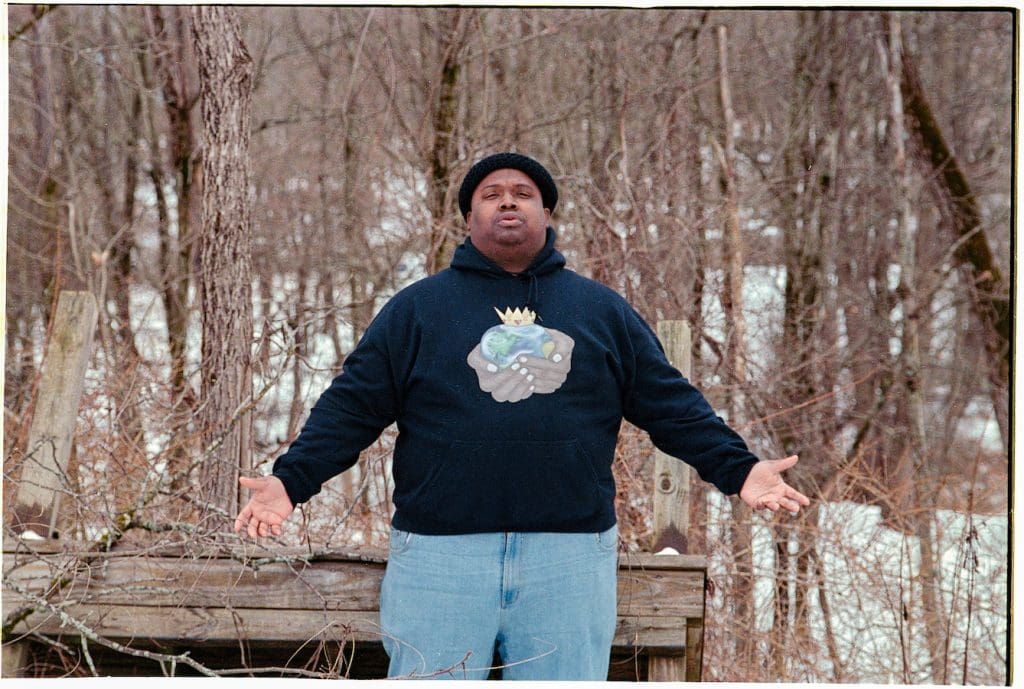
What are your memories of first hearing ‘Madvillainy’?
It was a few years after its release and I was instantly blown away. It connected with me in a huge way. I was already familiar with both DOOM and Madlib and listened to material from them that I loved, so when I was put onto ‘Madvilliany’ it was a game changer. The first track I heard was ‘All Caps’, and I needed to know where it came from. When I found the album it was a spiritual experience that I never forgot.
What does it mean to you personally?
For me growing up I was always influenced by and connecting with more experimental forms of art in a strong way. From films, art, literature, and music; ‘Madvilliany’ is one of those things that takes you on an experience from the first time you’re exposed, to each encounter after that.
The meaning that always stuck with me when I create my music is that there’s no rules and no limit on where you could go, and where you could push lyrically, sound wise and in just plain format.
How has it influenced you creatively?
It’s one of those projects that has many different layers within it, time after time, when you revisit. That has always been what I aim to do when I create. For me true art will always inspire, teach and entertain in ways that are one of a kind. ‘Madvilliany’ does those things in the strongest ways imaginable.
There are not really any choruses on the album and that was always amazing to me especially for the time period that it dropped in. It was way ahead of its time for that, and also the length of many of the tracks, as well as the way sound and transition was used.
Why do you think it has endured the test of time?
Every five to ten years there’s a project that drops that literally changes the music landscape at the time and influences the next generation of creatives for years to come. And that’s exactly what ‘Madvilliany’ is.
It’s a prime example of creating what you want and putting the music first, while sticking to your guns and pushing boundaries within the art without limitations.
Since that project both DOOM and Madlib have done amazing things musically, but that’s a special one for sure in both catalogs and will forever keep influencing generations of creatives for years to come.
Peace and love to Madlib
R.I.P TO THE VILLIAN
Photo by: George Douglas Peterson
—
RiTchie (Injury Reserve / By Storm) // (Rapper, Arizona)

What are your memories of first hearing ‘Madvillainy’?
My memories of first hearing this record are memories similar to watching ‘E.T.’, ‘Jurassic Park’, or any kind of monumental family or sci-fi film in your early developmental years. It may have been naïve of me, but I simply did not know rap records like this could exist.
What does it mean to you personally?
This record has become a place of comfort and refuge with its ability to take me out of whatever environment I find myself in that day.
How has it influenced you creatively?
It has inspired character and world-building approaches that free up the creative process while challenging what I self-create as my own status quo.
Why do you think it has endured the test of time?
I think this record has endured the test of time because of its perfect one two punch of singularity and quality. It’s easy to assume that it’s simply two legends at their best, but to me what really reinforces the classic longevity of this record is its ability to world-build without making the sacrifice of the individual songs. As soon as you put this record on you are warped into the world it’s built, but throughout the 45 minutes what keeps you spinning is how fantastic the songs are.
Every now and then you find records that are completely stuffed with straightforward, concise, and non-filler cuts. And every now and then you find fantastic records with world building qualities that wrap you in. ‘Madvillainy’ may be the only record able to accomplish both without sacrificing one.
Photo by: Patrick Driscoll
—
Wu-Lu // (Vocalist and Producer, London)

What are your memories of first hearing ‘Madvillainy’?
My first memories of this record was when my friend Hector Plimmer was playing it in his room. It was kinda presented to me as something I needed to hear. Being a young person in college into graffiti and hip-hop this was like a grail.
What does it mean to you personally?
It’s a record that always stood out to me. Mainly on the beats first and foremost. Listening to DOOM came later on… It always felt like I was listening to a comic book on a cassette tape.
How has it influenced you creatively?
The element of stitching together music in a way that doesn’t seem conventional but works as one piece. Being able to get lost in the production as a main focus point, then on other listens, losing myself in the storytelling aspect. Just keep going back over and over again.
Why do you think it has endured the test of time?
I think this record came out in the time when hip-hop was really laying bricks and these projects remind people of a time that probably won’t happen again….
Photo by: Machine Operated
—
Chuck Strangers // (Rapper and Producer, New York)

What are your memories of first hearing ‘Madvillainy’?
I’m not even going to cap. The first time I heard it I didn’t really have a lot of knowledge of underground music. I was still BET’ed out. So I didn’t know about people doing music that wasn’t as popular, but still as good as, or even better than, shit that was on TV. I had a friend from high school and I used to do beats for him, he really liked DOOM – and I remember the first time I heard it, I was like, “Why does bro rap like that? Nah, I’m trying to listen to The Game’s ‘The Documentary.’ I don’t wanna hear that!”
By the time I got to senior year of high school, I started adventuring and working on music more myself, and I was like, “Let me actually listen to this.” ‘Madvillainy’ was my first dive back into him, and to me that album was fucking flawless man. I was taken back by how ill he was, how ill the beats were, Madlib killed the beats. At that point in time, I thought there was mad rules, and these n****s aren’t listening to any of them – they’re just doing their thing. It carved a lane. It’s one of those projects that started a lane up.
How has it influenced you creatively?
It’s been a huge influence. In the past I’d be writing a song and I would want to keep writing, but I’m like, ‘I should stop writing here and then write a chorus and write another verse.’ From that shit, I just took like, “Do whatever the fuck you want to do!” If I want to rap a 42-bar verse then end the song, I can do that. It’s just all about what the music calls for.
And it just taught me to say whatever you want to say too. He says a lot of crazy shit on there! Say whatever you want. Who cares?
I took those two things from that. They do whatever they want and they were able to be successful. A lot of people feel like they have to follow rules in order to get success. And I just felt like, they are examples of, “No you don’t!” You can do whatever it is you want, you feel, as long as it’s true to you. Just be yourself and do whatever the fuck it is you wanna do, and someone in the world is going to be like, “I feel like that too!” More people that you’d probably think.
Why do you think it has endured the test of time?
The album itself is not following trends. What’s really giving it the longevity is it had the courage to be itself. If you go back to 2004 and listen to the music of 2004, it don’t sound like nothing that was popping at the time. In fact it sounds like them n****s probably had no idea what that shit even was, and they probably didn’t!
Photo by: Jack McKain
—
Louis Culture // (Rapper, London)
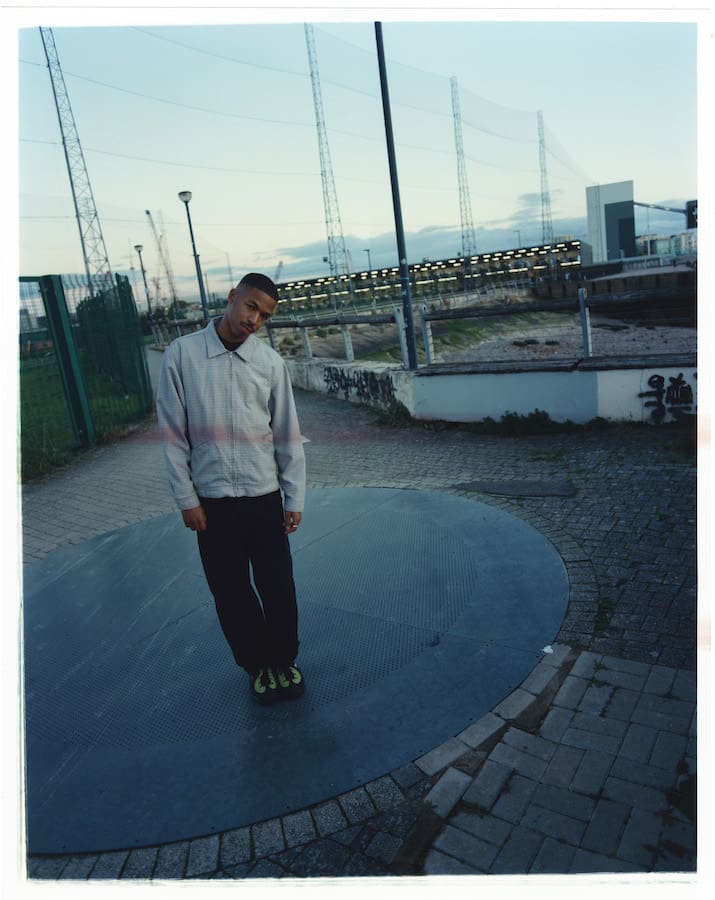
What are your memories of first hearing Madvillainy?
It appeared in my life much later on but ‘Eye’ is one of the most beautiful things I’ve ever heard.
What does it mean to you personally?
It’s a classic but also a staple for the genre too.
How has it influenced you creatively?
It was more of a trickle effect; my friend Apex was heavily inspired by it which I think influenced me to not only be a better rapper, but further explore the worlds of both MF and Madlib.
Why do you think it has endured the test of time?
It’s an example of two greats being humble enough to work with one another and challenge each other. But also,in comparison to where mainstream hip hop was during that time it was bound to stick out (in a good way).
—
Words: Grant Brydon // @grantbrydon


